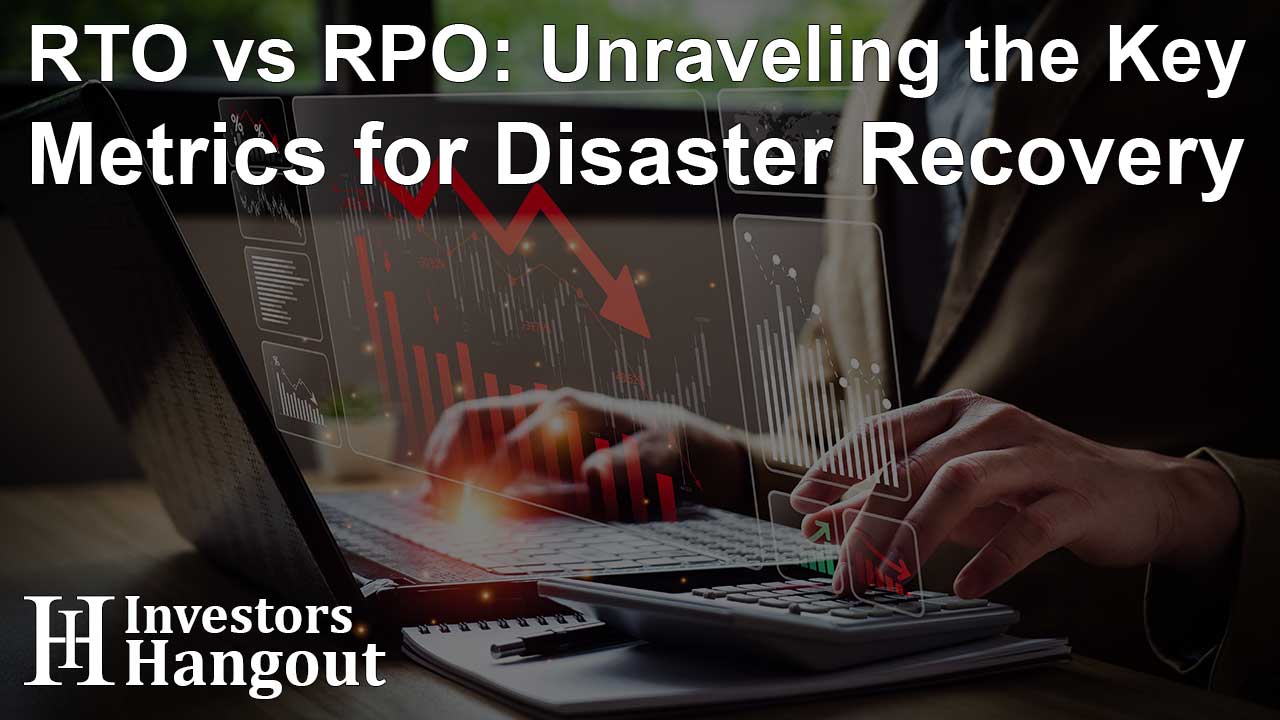RTO vs RPO: Unraveling the Key Metrics for Disaster Recovery

RTO and RPO: Key Metrics for Disaster Recovery
In the digital age, organizations face myriad threats that could cause data loss, system failures, and extended periods of downtime, which could significantly impact business operations. However, these outcomes can be avoided if companies create disaster recovery (DR) strategies that consider their unique needs to help protect against such threats and enable operational resilience.
Two key metrics heavily influence these strategies — Recovery Time Objective (RTO) and Recovery Point Objective (RPO). While RTO defines the maximum time systems can be down after a disaster, RPO is the amount of data you can afford to lose. Organizations hoping to protect their data, keep consumer confidence alive, and salvage the future of business operations cannot afford to overlook the distinction between RTO and RPO.
Understanding RTO and RPO
Let's define the RTO vs RPO meaning:
Recovery Time Objective (RTO)
The Recovery Time Objective (RTO) is the maximum tolerable duration during which a network, system, application, or service must be restored after a disaster before a business operation can proceed. More simply, it determines how fast an organization needs to recover its operations to avoid disruption.
For example, a company with an RTO of 4 hours must have its systems running within 4 hours during a disaster to avoid high-stakes productivity, revenue, and customer satisfaction losses.
Recovery Point Objective (RPO)
In RPO terms, it refers to the maximum amount of data loss (i.e., time) that can be tolerated. It specifies the recovery point or the point to which backup data needs to be restored following a disaster. For instance, the company can afford to lose up to 30 minutes of data in a disaster, translating into an RPO of 30 minutes.
In short, RTOs answer how fast things need to be done, while RPOs answer how much data the organization loses during recovery.
The Interplay Between RTO and RPO
As an information systems (IS) manager, IS lead, or IT administrator, you must understand the relationship between RTO and RPO because they are critical components of any good disaster recovery plan. They have a non-trivial impact on each other, and often, the value of these metrics determines which solutions an organization will proceed with.
-
Complementary Goals: RPO and RTO should have similar business-oriented objectives. A financial institution may need a very low RTO and RPO because of the criticality of real-time transactions. At the same time, a small startup can tolerate longer recovery times and some data loss, as likened.
-
Cost Implications: The shorter your RTO and RPO, the more you will have to pay for disaster recovery solutions. The cost of achieving particular RTO and RPO levels has to be compared against the potential financial impact on downtime and data loss for an organization.
-
Technology Solutions: While every technology solution enables some RTO or RPO, the curse is that it will always differ for other solution types. For instance, traditional backup solutions might have longer RTOs and RPOs than real-time replication solutions. Recognizing these variances can inform which tools an organization selects to incorporate in its disaster recovery plans.
Factors Influencing RTO and RPO
Several factors determine the RTO and RPO:
Business Impact Analysis (BIA)
Organizations need to perform a Business Impact Analysis (BIA), which allows them to zero in on the most critical processes and determine the impact if those areas are unavailable. The detailed evaluation as the basis to establish RTO and RPO in line with business requirement
Regulatory Requirements
Specific industries, such as finance or healthcare, must comply with solid regulatory requirements on recovery time and data retention policies. Moreover, the RTO and RPO, which stand for Recovery Time Objective (RTO) and Recovery Point Objective (RPO), respectively, would be criticality defined so that organizations within these sectors also comply with SOX regulations while protecting sensitive information effectively.
Technology Infrastructure
The existing IT infrastructure is also vital to determining an organization's Recovery Time Objectives (RTO) and Recovery Point Objectives (RPO). For example, cloud-based modern solutions occasionally allow me to do things in seconds or minutes that are impossible in older, more traditional on-premise setups, often hours and sometimes even days. Quicker recovery times and minimal data loss improve overall resiliency and efficiency.
Risk Assessment
The organization must understand the various types of risks it faces (natural disasters, cyber-attacks, hardware failure) to tailor the Recovery Time Objective (RTO) and Recovery Point Objective (RPO). This insight is valuable in aiding enterprises in prioritizing recovery efforts relative to the probability and impact of these disaster events.
Establishing RTO and RPO
To effectively establish RTO and RPO, organizations should follow these steps:
-
Conduct a Business Impact Analysis: Recognize essential business processes and discover downtimes or data loss that can be accepted.
-
Evaluate Current Infrastructure: Above all, one of the significant points is assessing your current infrastructure to know how well your IT systems can pass new recovery and backup guidelines, meeting RTO and RPO.
-
Set Realistic Objectives: Set RTO and RPO values that comply with business and regulatory requirements determined by the BIA.
-
Select Appropriate DR Solutions: Select disaster recovery solutions that meet the defined RTO and RPO. This would refer to options like cloud backup, on-site replication, etc.
-
Test and Update: Keep the plan updated if changes in technology or business processes occur or new risks emerge.
The Importance of RTO and RPO in a Disaster Recovery Plan
It is essential for several reasons to identify RTO and RPO clearly:
-
Improved Business Continuity: Understanding acceptable downtime and data loss ensures organizations have comprehensive plans for maintaining continuity during disruptions.
-
Informed Decision Making: Specifying RTO and RPO helps organizations make informed decisions about where resources must be invested and how they can help them retain operational availability at maximum efficiency.
-
Enhanced Customer Trust: Companies that demonstrate to their customers that they can recover quickly from disasters will do much more to build customer loyalty and trust.
-
Regulatory Compliance: Abiding by RTO and RPO requirements enables organizations to comply with industry regulations, mitigating the risk of penalties and reputational harm.
Conclusion
Ultimately, RTO and RPO are key parameters in any disaster recovery plan. Knowing the differences can help businesses formulate approaches that reduce downtime and data loss and correspond with organizational goals. The importance of RTO and RPO can be supported, especially in the evolution of technology, once we know the latest trends in today's more complicated threat landscape. When we release control of these resources to identify functions and metrics at the time of need, organizations are well-positioned to respond swiftly to disasters, ensuring operational resilience.
About The Author
Contact Dominic Sanders privately here. Or send an email with ATTN: Dominic Sanders as the subject to contact@investorshangout.com.
About Investors Hangout
Investors Hangout is a leading online stock forum for financial discussion and learning, offering a wide range of free tools and resources. It draws in traders of all levels, who exchange market knowledge, investigate trading tactics, and keep an eye on industry developments in real time. Featuring financial articles, stock message boards, quotes, charts, company profiles, and live news updates. Through cooperative learning and a wealth of informational resources, it helps users from novices creating their first portfolios to experts honing their techniques. Join Investors Hangout today: https://investorshangout.com/
